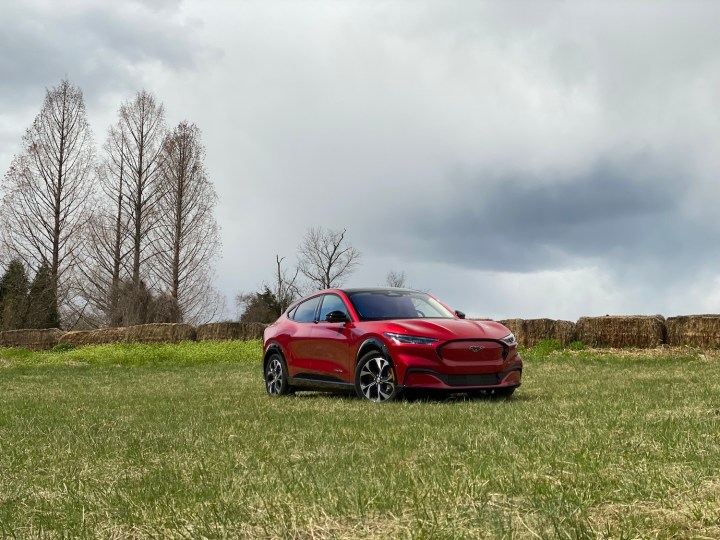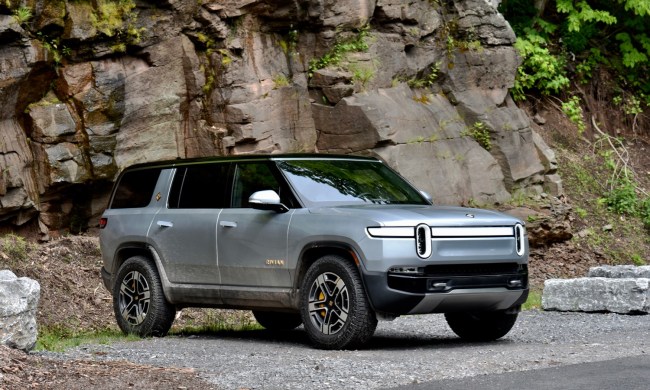The biggest drawback to owning an electric car is having to get used to and constantly dealing with a more limited range. Unless you’re driving a Lucid Air, your electric car likely drives a shorter distance on a full charge than the average gas-powered car on a full tank. And considering how slowly some EVs charge, that means that you’re likely thinking about range, often.
There are a few things that can lower the range even further, too. Very cold temperatures are one of those things — but it turns out, very hot temperatures can do the same. And, with the heat waves that have swept the world in 2023, that’s an issue that’s affecting more and more EV drivers out there.
So why does hot weather impact your EV’s range? Electric vehicles rely on batteries that function through a delicate balance of chemical reactions. When temperatures soar, those chemical reactions don’t take place quite as quickly, causing the battery to work harder and expend energy more quickly. An EV’s battery in hot weather may require more frequent charging stops, diminishing the vehicle’s range even further, not to mention the fact that you’re likely to crank the AC to help stay comfortable.
Unfortunately, maximizing EV range in hot weather isn’t as simple as flipping a “hot weather” switch in your car. To get the most range possible, you’ll need to actively make decisions, which may at times be inconvenient. And these decisions start even before you get in the car.
Smartly manage temperatures
Getting the best range out of your EV would involve not using climate controls at all. But it’s not all or nothing — you can still manage your car’s temperature while lessening the impact doing so has on the range of your car. The key? Change the temperature when your car is still plugged in.

“Pre-cool the interior before you drive in hot weather,” said Mark Holthoff, Senior Advice Editor at Carvana. “About 10 to 15 minutes before you depart and while the vehicle is still plugged in, turn on the air conditioner and let it bring the cabin temperature down to a comfortable level. That will help to prevent the AC from drawing heavily on the battery while you’re underway, increasing your overall range.”
Now, this does, of course, work best if your car is fully charged or almost fully charged. If your car is low on range and charging already, it will obviously charge slower as it uses energy to cool your car while regaining energy from charging. But it does still prevent having to blast the A/C when you first step into your car on a 100-degree day.
Once you do step into your car, it’s also worth going easier on the air conditioner than usual. You don’t necessarily need the interior of your car to be ice cold — on shorter trips, just make it bearable.
Park in a better spot
Maximizing range in the heat is all about avoiding heat — and so it’s worth thinking more about where you park, and taking steps to keep the interior cool if you do have to park in the sun.

“Park your EV in the shade to reduce the heat buildup inside your vehicle as it sits unattended,” said Josh Aviv founder and CEO of charging company SparkCharge. “If you can’t find shade, use reflective window covers or sunshade inserts to block those rays from entering your vehicle.”
Other EV rules to live by
There are other things you can do to maximize EV range, that don’t really have anything to do with heat but are still good EV rules to live by. For starters, you can make use of your EV’s “eco mode” if it has one, and turn on regenerative braking if you don’t already use it.
Also, make sure that you’re using the right tires on your EV. Correct tires can improve range on your car, as can ensuring that those tires are pumped up enough. Consult with the manufacturer of your car to check that you’re using the right tires.

And, if nothing else fails, consider driving less where possible, or driving in the morning or evening, when temperatures are cooler.
“To avoid having battery power run low during a scorching hot day, be intentional about planning your route and combine errands whenever possible,” continued Aviv. “If you commute to work, make time in your schedule for other stops along the way so you don’t make special trips and all your driving is done at once.”



